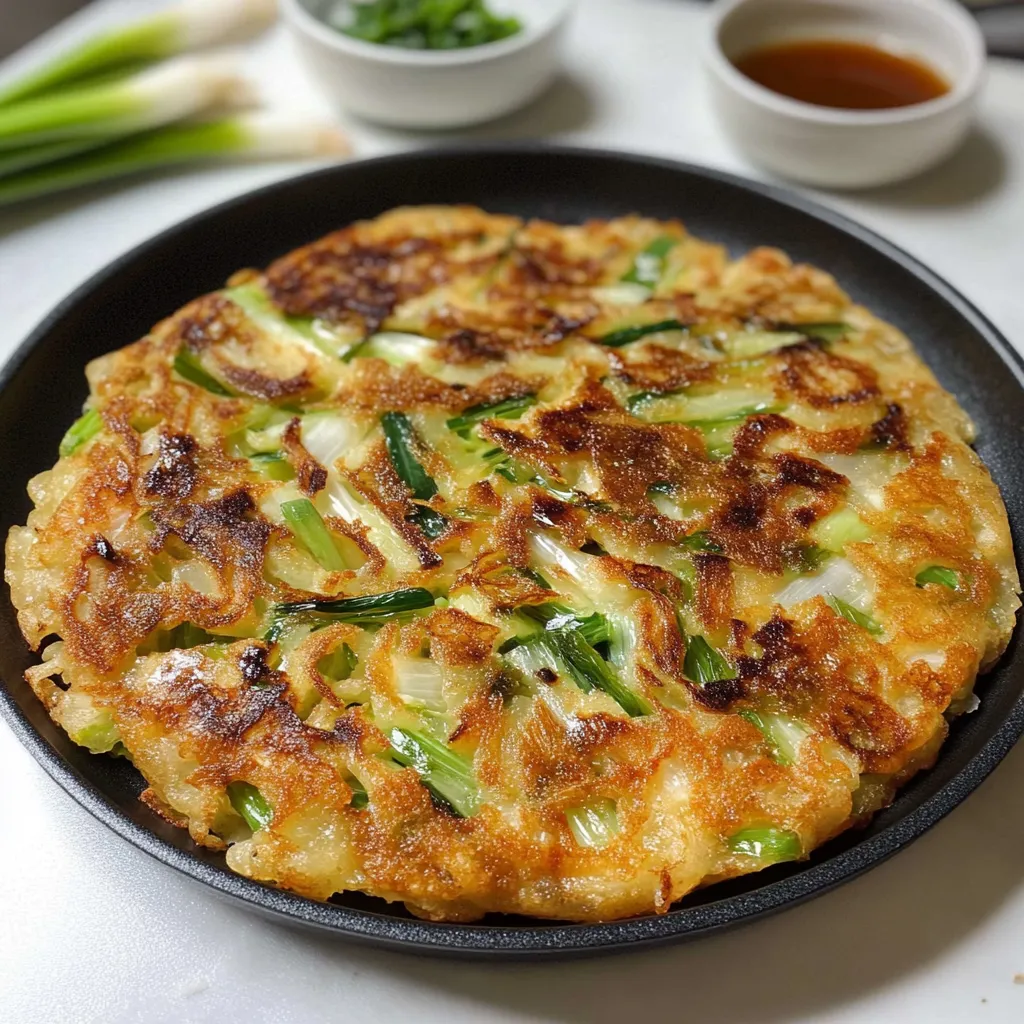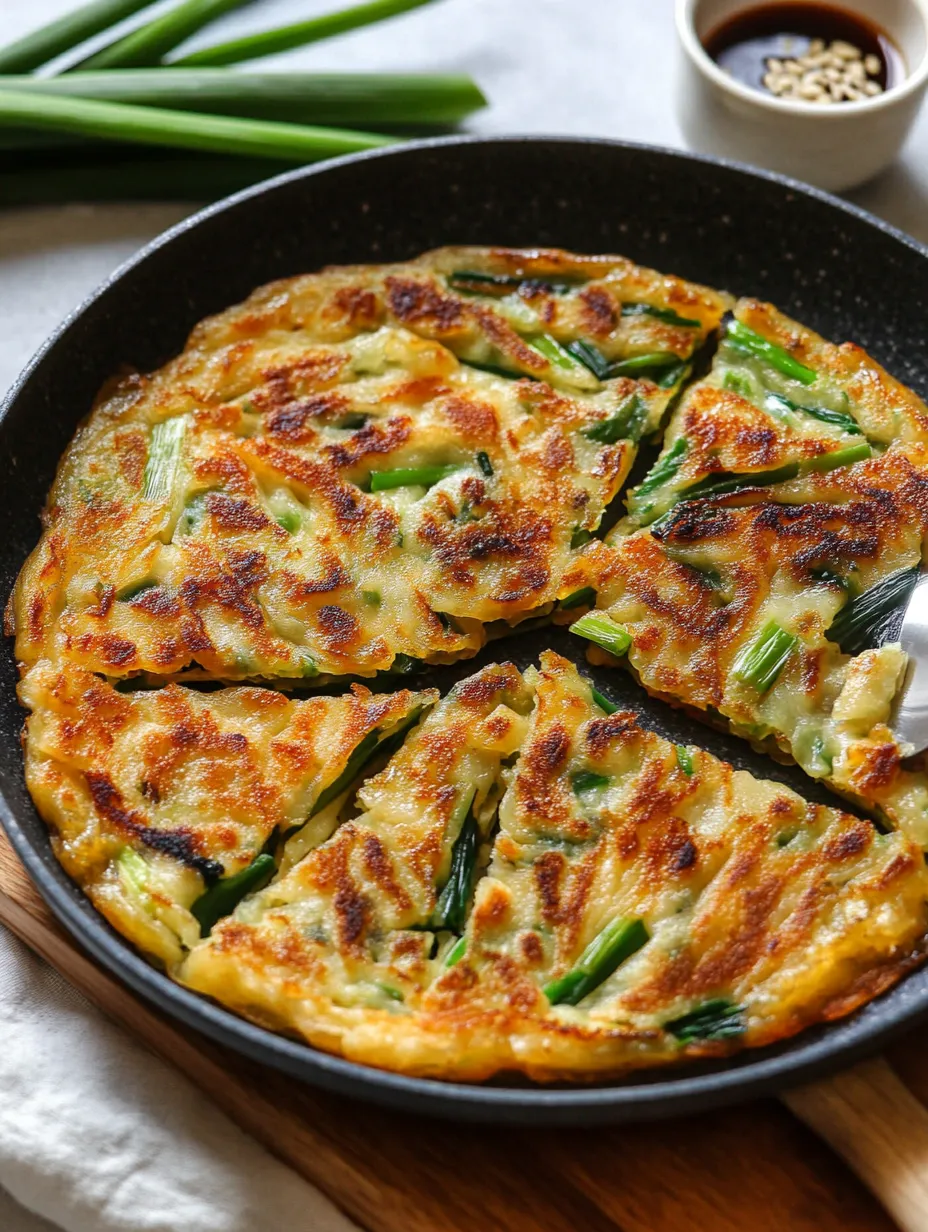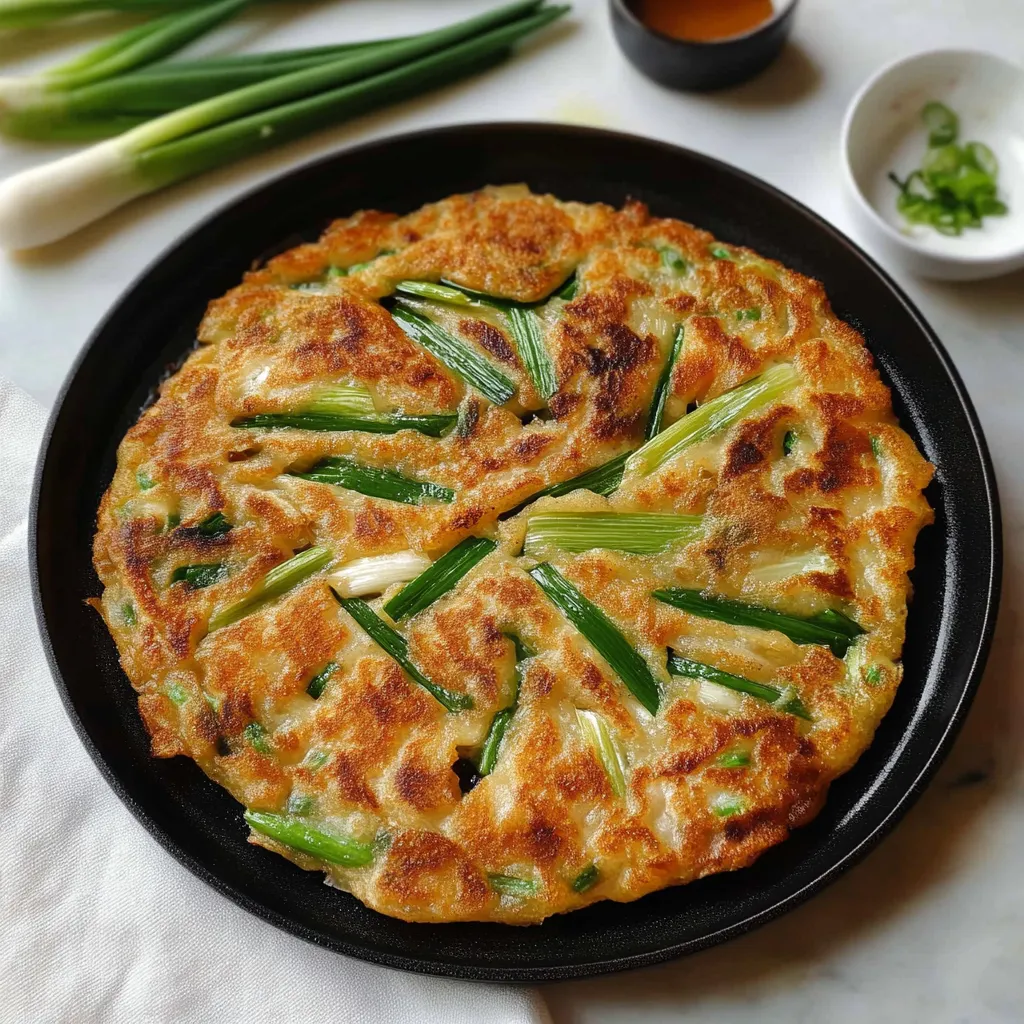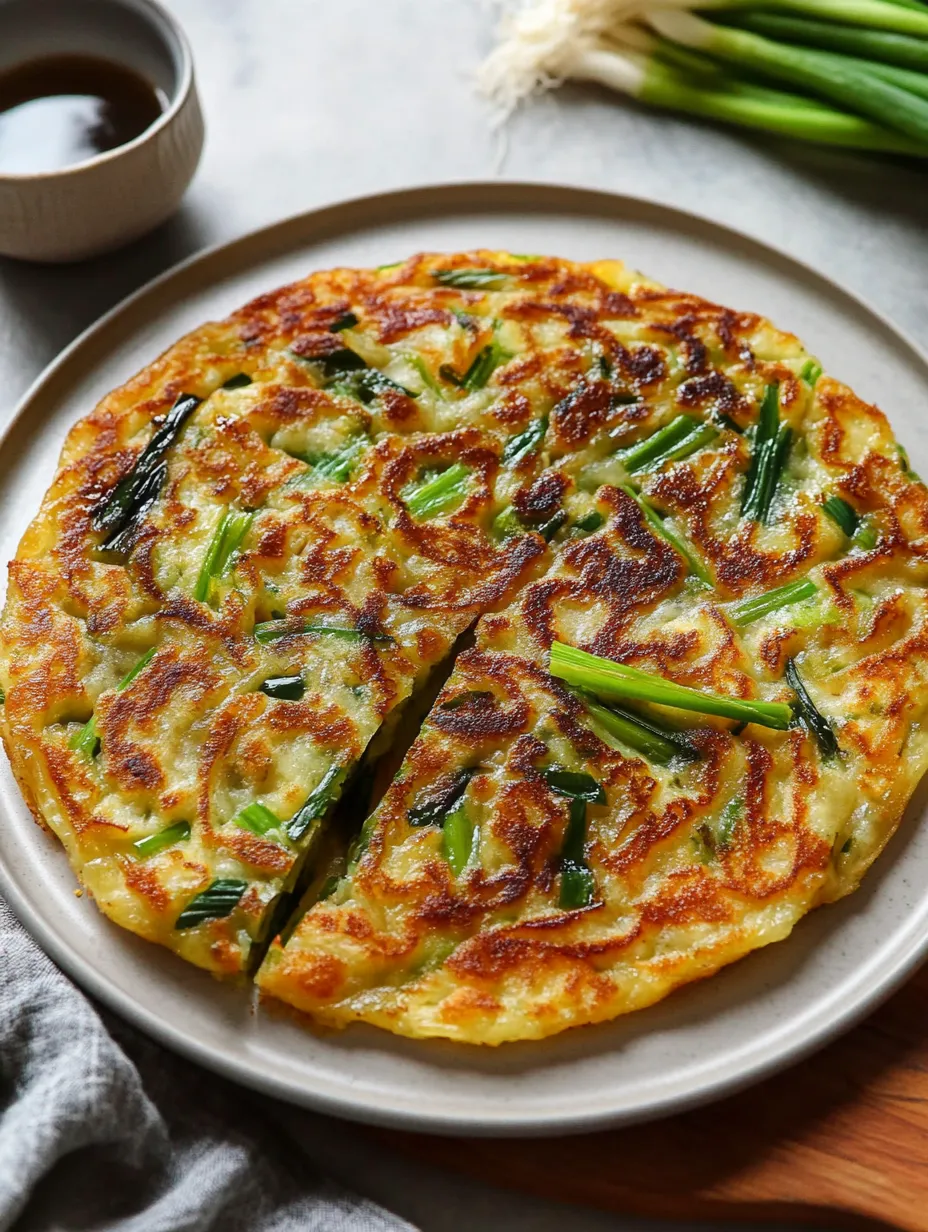 Pin it
Pin it
Pajeon brings together crisp edges and a chewy middle in this crowd-pleasing Korean scallion pancake that packs tons of flavor without much work. Loaded with green onions and dunked in a zingy soy sauce, this tasty snack turns basic stuff into something amazing. I stumbled across pajeon at a tiny Korean spot one rainy day, and it's stuck with me as my favorite comfort food since then, working great as a starter or small meal.
I made these for a few friends last week, and one who spent three years living in Seoul told me they were the most real-tasting homemade pajeon she'd ever had. The trick? Don't hold back on the oil and make sure your water is ice-cold when mixing the batter.
Key Ingredients and Smart Shopping Advice
- Green Onions: Pick bright, firm ones without any yellow spots for top-notch flavor
- Potato Starch: Delivers that iconic chewy-yet-crisp texture (you can swap in cornstarch if needed)
- Baking Powder: The hidden helper that many recipes leave out but makes things extra crispy
- Chicken Bouillon Powder: Brings rich flavor without needing lots of extra ingredients
- Very Cold Water: Water that's nearly frozen creates steam while cooking, making the pancake lighter
- Neutral Oil: Go for something that can handle heat like vegetable or avocado oil
Step-by-Step Cooking Guide
- Get Green Onions Ready: Clean them well and dry completely - water makes pancakes soggy. Cut thick white parts down the middle and chop into 1.5-inch bits. This helps you eat them easier and cooks them evenly.
- Throw Batter Together: Put flour, potato starch, baking powder, salt, bouillon powder, garlic powder, and onion powder in a bowl with green onions. Pour in ice-cold water and stir just until mixed - don't go crazy or you'll end up with tough pancakes.
- Get Your Pan Hot: Pick a big non-stick pan over medium-high heat with plenty of oil (about 2.5 tablespoons). The oil should look shimmery but not smoky. Good heat keeps things from sticking and makes them crispy.
- Put Green Onions Down First: Drop green onions into hot oil, spread them around before adding batter. This trick makes pancakes where you can see the scallions and gives better texture than jumbling everything together.
- Cover Onions With Batter: Pour the rest of the batter over your arranged onions, filling any empty spots. Gently swirl to spread it evenly without messing up your onion pattern.
- Watch Your Heat: Turn it down to medium and cook until the bottom turns golden and tiny bubbles pop up throughout, roughly 3 minutes. The right heat cooks things through without burning.
- Flip Without Fear: Wait for the pancake to set and turn golden before flipping. Use a big spatula and flip it all at once. Add the last bit of oil around the edges after turning.
- Press Down For Crunch: Push down now and then with your spatula while cooking the second side to get more contact with the pan, which makes crispier bites.
- Cut And Eat Right Away: Move to a cutting board and slice into squares or triangles. Serve hot for maximum crispiness.
- Stir Up Simple Sauce: Mix soy sauce, rice vinegar, sesame oil, and chopped green onions. The tangy-savory mix goes perfectly with the pancake.
 Pin it
Pin it
A Korean buddy laughed at my first pajeon attempt and taught me about patience. "Just wait," she said, "until you see golden edges. If you hurry, you'll end up with broken bits."
 Pin it
Pin it
Traditional Serving Ideas
Koreans love eating pajeon on rainy days, often with makgeolli (rice wine). There's something magical about munching on crispy, savory pancakes while sipping fizzy, slightly sweet wine and listening to rain outside. I've started doing this too, always keeping pancake stuff ready for stormy nights when I need something cozy.
Mix It Up Your Way
The best thing about this dish is how easy it is to change up. While the classic version stars green onions, you can throw in whatever you've got around. Sometimes I toss in thin-sliced mushrooms or bright bell peppers for more color and nutrients. When I want something heartier, I add small cooked shrimp or squid pieces to make haemul pajeon (seafood pancake), which turns this simple snack into a proper meal.
Food That Connects
Making pajeon links me to Korean food traditions that focus on keeping things simple but balanced. This basic pancake shows up at family get-togethers, street food stands, and fancy restaurants all over Korea - everyone from kids to grandparents loves it. Cutting it up to share with others fits perfectly with how Koreans value eating together. Every time I cook this, I'm joining in a food custom that's brought folks together for hundreds of years.
 Pin it
Pin it
Wrapping Up
These crunchy pancakes have become my trusty solution when I need something quick but impressive. The exciting sizzle when batter hits hot oil, the amazing smell of cooking green onions, and that first perfect bite with tangy sauce creates something way better than you'd expect from such basic ingredients. What makes pajeon special is how it turns ordinary stuff into something fantastic just by using the right methods. It reminds me that good cooking doesn't always need fancy ingredients or complicated steps - sometimes the most satisfying dishes come from getting the basics right and paying attention to little details that really matter.
Final Tips:
- For folks who can't eat gluten, swap all-purpose flour with rice flour or a gluten-free mix
- Make your dipping sauce first so flavors can blend while you cook the pancake
- Leftover pajeon crisps up nicely in an air fryer at 350°F for 5 minutes
- Save some green onion tops to sprinkle over just-cooked pancakes for a prettier look
- Make twice as much batter and freeze portions for quick meals later on
Frequently Asked Questions
- → Why is cold water important?
- Using cold water helps keep the flatbread crisp while cooking.
- → Can I swap starches?
- Stick to potato or corn starch for the best results; others like rice won't work well.
- → What if I don't dry the onions?
- Wet onions will ruin the crunch, making it soft instead of crispy.
- → How far ahead can I make it?
- It's at its crispy best straight out of the pan!
- → What's the ideal pan to use?
- A big non-stick pan works like a charm for easy flipping and consistent heat.
